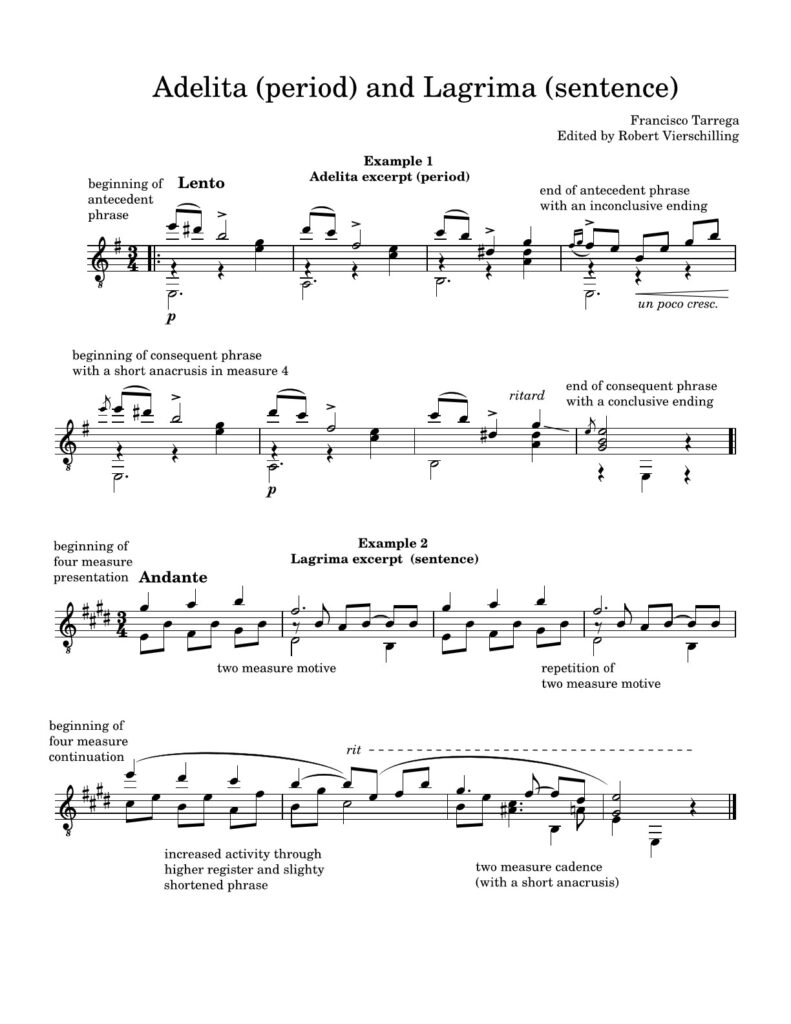Adelita and Lagrima by Francisco Tarrega are popular compositions from the classical guitar repertoire that provide excellent examples of two different phrase structures for beginning composers: the period and the sentence. Adelita begins with a period and Lagrima begins with a sentence. The basic models for both the sentence and the period are eight measures in length, yet what happens within the eight measures differs between the two. Beginning composers can use these phrase structures as models for their own compositions.
The period (the beginning of Adelita) consists of two four-measure phrases (the antecedent and consequent phrases), each of which begin with the same music. A period has a feeling of a question (the antecedent phrase) followed by an answer (the consequent phrase). This is because the antecedent phrase has a weaker and inconclusive ending, while the consequent phrase has a stronger and conclusive ending. In Adelita, the consequent phrase begins with an anacrusis in measure 4. See example 1.
The sentence (the beginning of Lagrima) consists of a four-measure presentation, which is followed by a four-measure continuation. Lagrima begins with a two-measure motive in measures 1 and 2 that is repeated in measures 3 and 4. The continuation begins with an increase of activity in measures 5 and 6. The increase in activity is created through the use of a higher register, and a slight shortening of the phrase when it ends on beat two of measure 6. The sentence ends with a two-measure cadence with a short anacrusis. See example 2.
The website Open Music Theory describes the terms phrase, period, and sentence in detail (https://viva.pressbooks.pub/openmusictheory/chapter/phrase-archetypes-unique-forms/). The sentence and the period are also described in detail in the book Fundamentals of Composition by Arnold Schoenberg.

You can download a .pdf of the example page by clicking on the button below.
